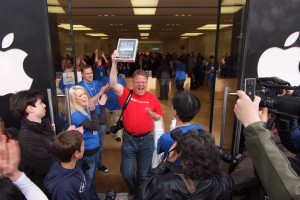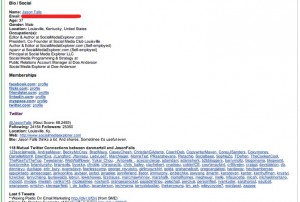Is this post a little self serving? Yes. (I’m a co-founder of Flowtown). That being said – we use Flowtown every day in our customer development processes and after showing several startups how to accomplish this, I figured it only made sense to share it with the rest of the lean startup community.
1. Finding Early Adopters
One of the biggest challenges for most startups is finding early adopters for their application.
Early Adopters: Passionate, early users of new technology or products who understand its value before mainstream markets. Acquiring early adopters is important to jumpstart product adoption. (p.17 – The Entrepreneurs Guide to Customer Development)
They become extremely important in providing feedback on product features, competitive landscape, the market and potential business models.
3 steps to helping you find them within your teams network:
- Using Flowtown you can easily import all your existing contacts manually or by using one of our import methods: CSV, GMail, MailChimp or Campaign Monitor. From there we analyze them and create a rich social profile.
- Now, using the occupational search feature – you can look for individuals who may have have experience in the market you’re targeting. For example – here’s the search we conducted within all the founding teams contacts: CMO/CEO/COO, Social Media Experts / Consultant, Founders / Co-Founders, Marketer / Marketing and Community Manager.
- From there you can create a contact group from this search result and send them an email or tweet to connect with them. (tip: in person – get out of the building 🙂
Bonus Tip – Here’s a list of people that you can ideally learn a lot from:
- Industry consultants
- Developers with domain knowledge
- Founders in similar market addressing a different customer
- Investors with an interest in your market
2. Learning and Engaging Your Users
Once you start having users – you can then do a variety of things within Flowtown to understand and engage with them better:
- Create Twitter List from a User Group: Using the ability to create groups based on location, occupation or social network you can use this to engage with them on twitter.
- Timed Survey Automation: Flowtown has the ability to schedule a customer discovery survey (ex: using Survey.io) to all new users 2 weeks after they’ve activated or sign up for your application.
- Customer Advisory Board (CAB): Creating a Customer Advisory Board (CAB) contact group, you can then add customers and others individuals from your target market that have agreed to provide feedback and validate ideas before building them by sending simple emails with either surveys, product screen shots, screen casts or mock-ups.
These are just a few ways you can use Flowtown to interact with your users and potential customers.
3. Real Time Notifications of Target Users
Using the our web hook integration, you can setup your sign-up flow, newsletter subscriptions or contact form (ideally using Wufoo) to add that person to a Flowtown group. From there, you can setup a social notification to be emailed anytime someone meets one of the following filters; twitter influence, occupation or location. For example – anyone that signs-up for Flowtown that has either a Klout twitter influence score >=15, occupation is either a Founder, Co-Founder, CEO, CMO, Marketer or lives in San Francisco – I receive an email like this.
From there I typically do one of the following:
- Ask them what problem they feel that Flowtown would solve for them
- Ask them to join our Customer Advisory Board (CAB)
- Ask them how they heard about us
- Ask them for a 15 minutes phone call and conduct a customer discovery interview
- Say hi to an old friend!
… Final thoughts
Most startups fail because they’re building something that nobody wants and they run out time and/or money before they can learn their way to success.
Hopefully you’ve adopted Customer Development (CD) within your startup and find some of the tips I’ve provided useful in regards to learning exactly what it is that’s going to make your product a must have.
Did I forget anything? I would love to hear from you in the comments.



